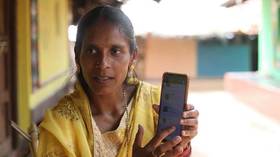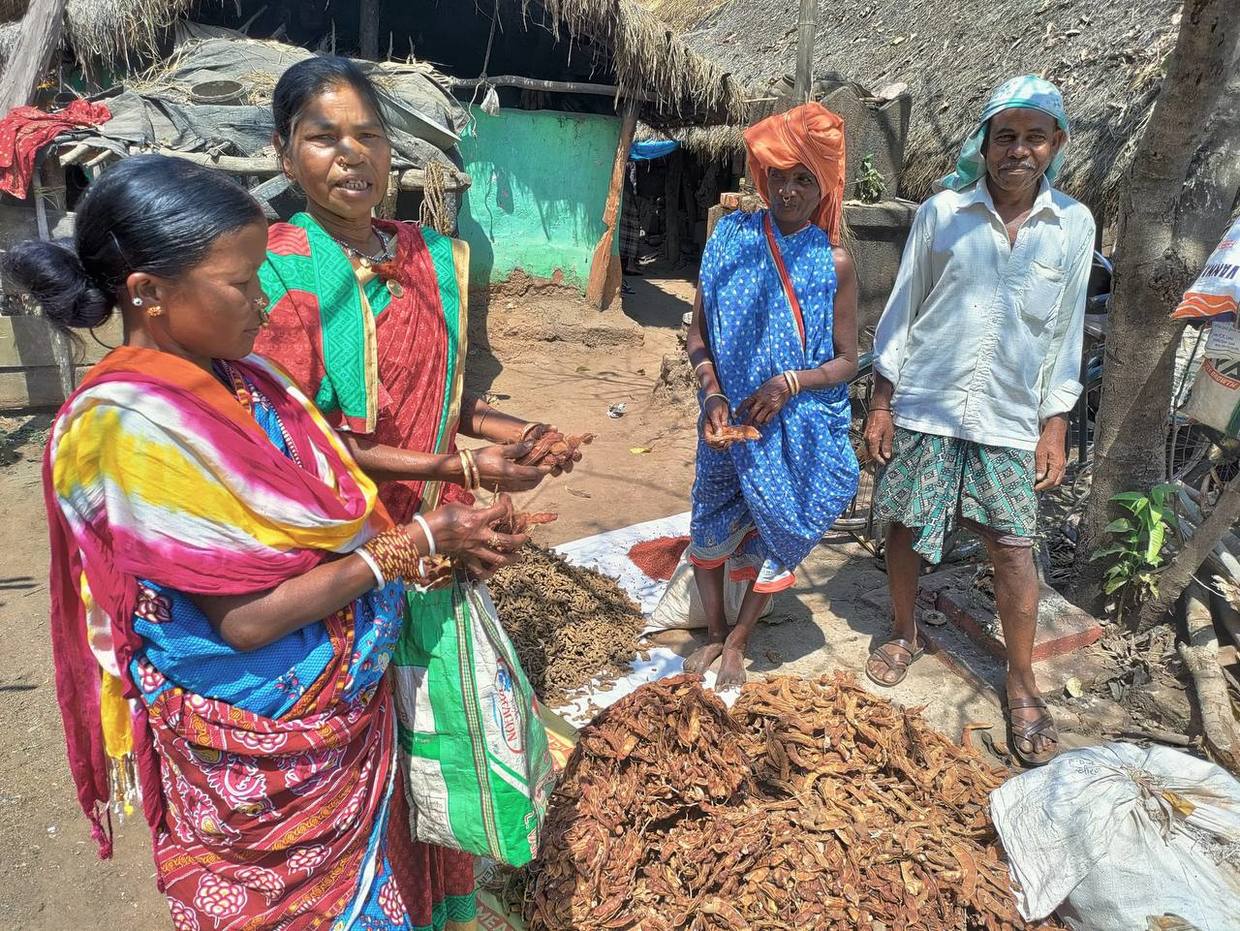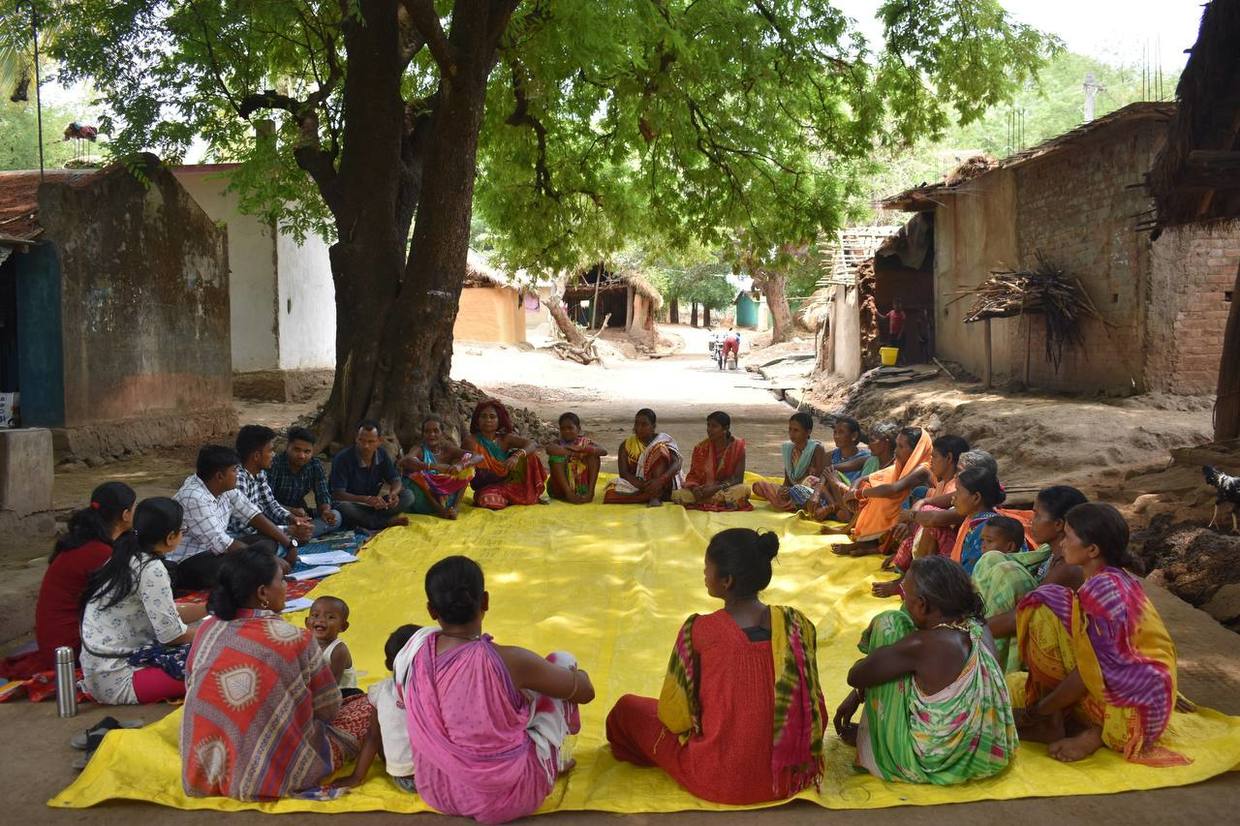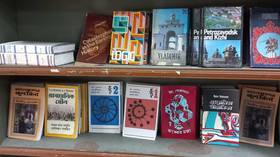Feminism in the jungle: This ‘digital weapon’ helps women reclaim their power

Savitri Bisoyi, 42, was all smiles as she earned 18,000 rupees ($216) by selling five hundred kgs of tamarind harvested from her four trees this year. Earlier, she would lease out the trees at 1,500 to 2,000 rupees ($18 to $24) each and, at best, earn a meager sum of 6,000 to 8,000 rupees ($72 to $96).
Savitri lives in Maliguda village in Koraput district in India’s eastern state of Odisha. Koraput is the ground zero of Odisha’s tribal heartland: Its population is over 50% tribal. It is also India’s fourth poorest district: 33.54% of its population is multidimensionally poor, according to the National Multidimensional Poverty Index.
“All women collectors of non-timber forest produce (NTFP) in the 22-gram panchayats (the village governing unit) under six ‘blocks’ of Koraput district earned a good profit this year. They sold their harvest to Tribal Development Co-operative Corporation Limited (TDCC), a government body, at a minimum support price (MSP), fixed by the government – 3,600 rupees ($43) per quintal – thanks to the power of digitalization,” Pushpalata Bisoyi told RT.
Pushpalata is the secretary of a community center in Asana, Koraput; these centers are in predominantly forested tribal districts of India under Van Dhan Yojana, an initiative launched by the central government to promote NTFP-based livelihood.
A paradigm shift
The digital revolution was brought in by the Banashree mobile application launched in December 2022 by the Center for Youth and Social Development. As the name “Banashree” suggests – “Bana” means forest, and “Shree” means prosperity.
“This app empowered tribal women with information about the NTFP value chain system, market engagement, financial inclusion, and other entitlements of forest dwellers,” says Ashis Jali, who has been monitoring the implementation of welfare projects in tribal south Odisha.

Asana’s center facilitated the collection and sale of around 20,000 kgs of tamarind by 20 members of two self-help groups (SHGs) to TDCC using the mobile app. “This is 50% of the tamarind sold to TDCC from Asana panchayat,” says Pushpalata. “Of the blocks of Koraput, Kundra sold the most.”
Eradicating exploitative practices
Pushpalata sold 915 kgs of tamarind harvest at 32,940 rupees ($395) this year. Last year, the same amount of produce got her 21,600 rupees ($259) from a local trader. Unscrupulous traders take advantage of families at critical moments and force them to sell at throwaway prices.
Basanti Harijan from Raniguda village bartered 20 kg of tamarind for a frock listed at 150 rupees ($1.80) for her five-year-old daughter last year. Had she sold the 20 kg of tamarind to TDCC, she could have earned 720 rupees ($8.65).“Due to the lack of proper information and channels to sell their produce, many still use bartering for clothes, groceries, and utensils,” Jali says.
The potential of the market in Odisha
For the forest-dwelling communities of districts like Koraput, Malkangiri, Rayagada, Gajapati, and Mayurbhanj, forest produce is not just a crucial source of livelihood but a way of life, says Uppali Mohanty, a Bhubaneswar-based development practitioner. It contributes to around 40% of their annual income.
The NTFP market in Odisha is estimated at tens of millions of rupees annually. Products like tamarind, vegetable gum, seeds for sal trees, lac resin, honey, and medicinal herbs are highly sought-after in national and international markets.
With a rich biodiversity and a variety of NTFPs, Odisha has significant export potential. Despite this, the primary gatherers have been victims of distress sales due to hurdles such as lack of a proper system for marketing, Mohanty laments.
An application for upliftment
In this context, Banashree attempts to organize the NTFP value chain system by linking each family’s stock of NTFP to the market to ensure a fair price. It’s a platform for women to make informed decisions and encourage collectivism for enterprise and prosperity, says Uppali.

“The app’s importance is in initiating digital literacy among women,” says Jali. It goes a long way in creating a gender-equal tribal society by addressing the barriers faced by women in digital connectivity, economic participation, and decision-making.
Till now, it is used by around 6,607 primary gatherers registered in Koraput district, Jali maintained. It nurtured community leaders as ‘Digital Champions’ who work in a mission mode to facilitate better digital access among women. These Digital Champions play a vital role in educating women on the use of this app, facilitating marketing activities, promoting collective enterprises, and building cohesion among the community members, Jali added further.
It is no cakewalk
“However, it was no cakewalk,” said Pushpalata, a digital champion. “Women in forested areas not only do their household chores, they devote most of their time to supporting their family income. Thus, uniting them at a particular place and time and motivating them to use smartphones, which has been an inaccessible luxury even for tribal males, is a daunting task,” she says.
“The women were unfamiliar with the operation of even first or second-generation mobile phones. While some families still do not possess a smartphone, many possess only one, operated by a male member,” said Karishma Kandapan, the digital champion of Sana Gadabalsa village in Kanagaon panchayat of Bandhugaon block.
“Fortunately, each family of Asana possesses at least one smartphone. It demands time and patience to train women on how to download the app, add information on their NTFP stock in the app, and check the current MSP and the stock with other community center members using the app,” said Pushpalata.
“However, with her consistent efforts, she taught us not only the operation of the app but also the basic operation of smartphones,” says Padma Saanta, 45, a Kondh community member (an indigenous tribe) in Asana. “Pushpalata also trained my son. He is helping me in case I face any difficulty,” Padma, a community center member, adds.
The Banashree app started with tamarind, Jali says. It will gradually include other NTFPs and agricultural produce by integrating it with farmer-producer organizations (FPOs) for profitable marketing.
Charting a digital path ahead
Though the app went a long way in empowering women, a lot still needs to be done as far as digital literacy is concerned, says Basanta Kumar Nayak, a Bhubaneswar-based policy and budget analyst.
Tribal districts lack a robust digital infrastructure, such as reliable internet connectivity and access to smartphones or computers. On top of this, the gender digital divide is prominent in tribal communities, with women having limited access to digital devices, he laments.
It is time the government took measures to ensure digital connectivity in the interior, Nayak says. Digital literacy and training programs through community leaders are essential for tribal communities to empower them with market linkage, entitlements, social security schemes, and value-addition opportunities, leading to reducing dependency on intermediaries and propelling sustainable economic development.














